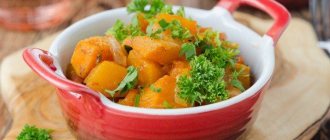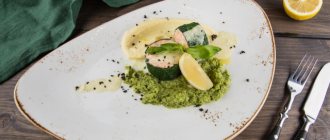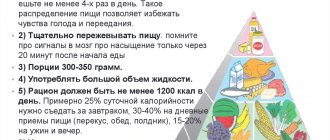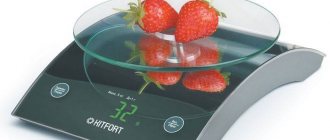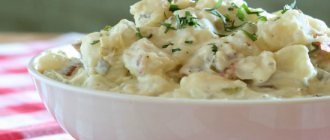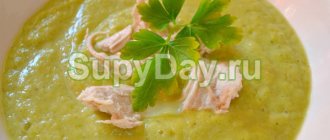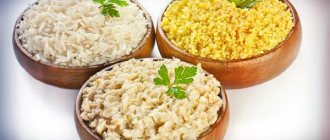general characteristics
The culture originated in the Mediterranean countries and was called “Syrian” cabbage. It differed from modern cauliflower in its more bitter taste, late maturity and flower structure. The head of the vegetable had a darker color and a soft creamy texture.
Content:
- general characteristics
- Benefits for the body
- Medicinal use
- Cosmetological use
- Use in cooking
- Cooking recipes
- Storage methods
From Syria, cabbage migrated to Cyprus, and from there to Spain, France, Holland, England and Russia. Cauliflower was grown only by the rich segments of the population and liked to eat it in the winter season. Cauliflower did not grow in the Russian climate, so agronomists had to change the structure and develop a “northern” version of the vegetable. Breeders created the denser, slightly sweeter cabbage we are accustomed to seeing today. Today the vegetable is grown everywhere. Among cruciferous vegetables, cabbage ranks second in terms of scale of cultivation, behind cabbage.
Benefits for the body
We eat shoots, which contain the maximum nutritional value of the product. It contains a large amount of vitamins B, , C, potassium, calcium, sodium and phosphorus. Cauliflower is one of the few plant foods that is high in iron. Of course, its quantity is significantly lower than that of meat products, but, for example, vegetarians should think about including vegetables in their diet.
The dietary value of cruciferous vegetables is well known. Cauliflower is an integral part of a healthy diet; per 100 grams of product there are only 25 calories. Vegetable protein will help you gain and strengthen muscle mass, improve skin color and tone, and constantly cultivate and expend energy potential. Fiber, which is part of the vegetable, stimulates the gastrointestinal tract and significantly speeds up metabolism. Daily consumption of 100-200 grams of the product accelerates metabolism and leads to noticeable weight loss and improved well-being. This is only possible if you switch to a healthy balanced diet, avoid bad habits, and engage in irregular sports.
But do not forget about the carbohydrate component of the vegetable. Based on 100 grams of raw product, we get 5 grams of carbohydrates. 1.9 of them are sugar, which is a fairly high figure.
Consuming sugar in large quantities will negatively affect not only your figure, but also your health.
Medicinal use
Our body absorbs cauliflower best. This is due to the thin cellular structure, which easily passes through the esophagus, is quickly digested and does not irritate the walls of the internal organs. Cauliflower is recommended to be included in children's diets and for gastrointestinal diseases. It is necessary for people with low secretory function of the stomach, peptic ulcers, and problems with bile secretion.
It is recommended to boil the vegetable, eat it pure or as a side dish. Use a small amount of spices or avoid them altogether so as not to irritate the walls of the internal organs.
If you have been diagnosed with gout, we recommend avoiding cauliflower. It contains a large number of purine bases, which can adversely affect the course of the disease.
Advantages and disadvantages
Benefits of Cauliflower?
- Since it contains vitamins A, B1, B2, C and E, cauliflower satisfies most of the body's vitamin needs and is also a vegetable rich in calcium, phosphorus, potassium and magnesium.
- Cauliflower also has diuretic properties and has a preventive and protective effect on the stomach. This is a wonderful winter vegetable that also benefits the body's detoxification and is a very healthy food for liver health.
- People suffering from diabetes can consume it with peace of mind as it helps increase sexual desire, meet folic acid requirements and protect against heart diseases.
Is cauliflower harmful?
- Although cauliflower is a healthy vegetable, it should be consumed in doses, like all nutrients, so as not to overdo it.
- Also, if you suffer from kidney disease or gout; you should talk to your doctor about cauliflower consumption and consume it in the amount your doctor deems appropriate.
Cosmetological use
Any vegetable can be turned into a healthy face or hair mask. Cauliflower is no exception. Your skin will receive an excellent charge of vitamins and microelements that will make it bright, radiant, and hide visible imperfections and signs of aging.
To make a mask, boil the inflorescences and grind them through a meat grinder. The resulting puree should be used as the main ingredient of the mask. We recommend enriching the cabbage puree with oils (olive, apricot, almond) or additional food ingredients (cucumber, honey, sour cream, raw egg). Leave the mask on for 5-10 minutes, rinse with warm water and pat dry gently with a towel. The optimal number of procedures is 1 time per week.
Cauliflower juice for weight loss
The juice of this vegetable is extremely useful for dissolving fats, especially in the abdominal area. You can use 2-3 cauliflower flowers, cauliflower leaves and 1 liter of water along with boiling water for 10 minutes and then use the remaining water. It will also be very useful to add half a lemon to it. Those who use cauliflower can see regional weight loss and fat burning as well as their skin becoming clearer and skin problems diminishing. It is also extremely useful in getting rid of swelling.
Use in cooking
All parts of the vegetable can be eaten. The inflorescences are usually boiled or baked with meat, fish and other side dishes. You can make dietary vegetable broth from the “leg” of cabbage. The vegetable will give a characteristic bitter taste to the broth, which will complement the overall flavor palette.
Cauliflower can be subjected to all types of heat treatment: steaming, boiling, frying in batter or oil, baking. The main advantage of the product is its nutritional value. Despite the huge amount of vitamins and beneficial elements, the calorie content of the vegetable is minimal. Introduce 200 grams of raw product into your daily diet to speed up metabolism, remove cholesterol, improve the functioning of the digestive system and, accordingly, improve health.
Typical daily menu of the cabbage diet
- Morning : a glass of green tea without sugar or black coffee.
- Lunch : portion (250 g) of dietary meat + light cabbage dish. You can boil or bake rabbit, veal, chicken or turkey without skin. No meat - cook lean fish. Serve the meat without sauce or side dish. As a cabbage dish, serve stewed white cabbage, steamed broccoli, cabbage and fresh carrot salad, seasoned with lemon juice. Do not serve any drinks with dinner - you can drink no earlier than 25 minutes after finishing your meal.
- Dinner : salad of 2 boiled eggs, a green apple and fresh cabbage (it is better to use green cabbage, not cauliflower - Peking or young white cabbage). It is better not to season the salad with oil, nor to add salt. But a dozen drops of lemon juice would be appropriate!
Some nutritionists, while not advising to overeat at night, recommend drinking green tea before bed. But this drink contains caffeine, which will keep many people awake. It is better to limit yourself to kefir (and the lower the fat content of this kefir, the better).
Cooking recipes
Cauliflower baked with creamy sauce
We will need:
- cauliflower – 400 g;
- lactose-free butter – 1 tablespoon;
- durum wheat flour – 1 tablespoon;
- cream (10%) – 500 ml;
- grated hard cheese – 150 g;
- spices to taste.
Cooking method
Wash the cauliflower, separate into florets and boil in salted boiling water. Cooking time – 10 minutes. Drain the inflorescences in a colander and let dry. Fry flour and cream in butter, bring the mixture to a boil and add cheese. As soon as the cheese starts to melt, add your favorite spices.
Take a baking dish, lay out the inflorescences and pour in the prepared creamy sauce. Bake at 180°C for 25-30 minutes.
Cauliflower in batter
We will need:
- cauliflower – 400 g;
- chicken egg – 4 pcs;
- cow's milk - ½ cup;
- durum wheat flour – 100 g;
- olive oil – 2 tablespoons.
Cooking method
Prepare the batter: mix milk, vegetable oil, yolks, add flour and whipped whites. Mix the ingredients until a homogeneous mixture is obtained. Wash and boil the cauliflower (5-7 minutes). Dip the finished inflorescences in batter and fry until golden brown.
Quiche with cauliflower
We will need:
- cauliflower – 300 g;
- chicken egg – 2 pcs;
- low-fat sour cream – 120 ml;
- mustard (Dijon or regular) – 1 tablespoon;
- hard cheese – 70 g;
- salt, pepper, spices to taste.
Cooking method
Buy puff pastry at the store or prepare it yourself according to any recipe. Place the vegetable in boiling water for 3-5 minutes, then transfer to a large, wide container. Line a wire rack with baking paper and place the cakes on it. Cut the hard cheese into small cubes and place it on the crust. Separate the cabbage into florets and place on the wire rack with the crust and cheese. Prepare the sauce: mix a chicken egg, low-fat sour cream, mustard, a pinch of salt, pepper and Provençal herbs. Pour the prepared sauce over the quiche and place in a preheated oven. The oven should be preheated to 200°C. Total cooking time is 40 minutes. 10-15 minutes before readiness, add the necessary spices to the quiche.
Diet price
The cauliflower diet is very budget-friendly and affordable. For an extreme three-day course, you will need to purchase only 4.5 kg of cabbage, which will cost no more than 400 rubles. Thus, over the weekend you can not only lose a few extra pounds, but also save money for some larger purchase.
To undergo a longer seven-day weight loss, in addition to 3.5 kg of cabbage, you need to purchase 2 kg of chicken fillet, 1.5 kg of a set of various vegetables, up to 0.5 kg of greens (including lettuce, spinach, arugula, etc.) , 7 medium fruits, one for each day for a snack, for example, 4 apples and 3 oranges. On average, such food will cost you 2800-3000 rubles.
Storage methods
Best materials of the month
- Coronaviruses: SARS-CoV-2 (COVID-19)
- Antibiotics for the prevention and treatment of COVID-19: how effective are they?
- The most common "office" diseases
- Does vodka kill coronavirus?
- How to stay alive on our roads?
There are 4 simple ways to store cauliflower.
Method No. 1
Trim the roots, carefully remove the top leaves, tie twine (or any other dense thread) around the stalk and hang it perpendicular to the surface. It is important that the cabbage is hung at a certain distance from other vegetables, the edges should not touch. In a suspended state, the vegetable is stored for 30 days.
Method No. 2
Dig up the unripe cabbage and leave it to “ripen” in a dry place without access to sunlight. It is important that the air circulates normally in the room and that the temperature does not exceed +4°C. Ripening can last 2-3 months.
Method No. 3
Compact the inflorescences with leaves into plastic or plywood boxes. Cover the vegetables with film and leave them in a dry place out of direct sunlight. Cabbage can be stored for 60 days.
Method No. 4
Cut the inflorescences, separate them from the leaves, rinse thoroughly, dry, wrap in a craft or plastic bag and place in the freezer. You can lightly boil the vegetable first (no more than 5 minutes). The shelf life of frozen cabbage is 12 months. We recommend freezing vegetables in the fall to ensure constant access to nutritious food throughout the winter. All you need to do is take some vegetables out of the bag and immediately place them in boiling water. Frozen vegetables will cook much faster than fresh ones.
More fresh and relevant information about health on our Telegram channel. Subscribe: https://t.me/foodandhealthru
We will be grateful if you use the buttons:
Menu for the week
Recipes for such a menu include vegetables, fruits, cereals, fish and meat, as well as dairy (cheese and yogurt). Days can be swapped. If you decide to lose weight for 10-14 days, from the eighth day repeat this menu from the beginning.
Monday
- Breakfast : oatmeal without sugar and butter, but with milk + a cup of green tea with a spoon of honey.
- Lunch : a serving of baked chicken chops with a vegetable side dish. Use no more than 1 breast per person.
- Dinner : cabbage salad, dressed with lemon juice and live olive oil.
Tuesday
- Z : buckwheat on water, seasoned with honey and flavored with prunes.
- A : Beef cutlets baked on a bed of vegetables. For one serving you need 80 g of meat, bran, egg (for juiciness, add vegetables to the meat - onions and carrots, chopped using a blender or meat grinder). As a pillow, you can use either fresh vegetables or a store-bought frozen mixture (but without rice and potatoes).
- U : fresh cabbage with canned peas. Dress this salad with olive oil. You cannot salt the dish.
Wednesday
- W : 100 g low-fat cottage cheese + fruit salad (one fresh orange, pear, apple each), seasoned with liquid honey.
- A : a portion of steamed broccoli and fish (to prevent lean sea fish from turning out too dry, it is better to cook such a product not as a fillet, but as a carcass, that is, on the bone). Lunch can be flavored with herbs (say, Provençal), but salt is prohibited.
- U : cabbage, carrots, olive oil + cheese. It is worth buying the lowest-calorie cheese (feta, light cheese, cottage cheese, hard fitness cheese). Soy tofu is also recommended for weight loss (the fat content of such cheese is minimal - 1.5-4%).
Thursday
- H : boiled chicken egg + boiled buckwheat (no oil) + a glass of green tea (can be sweetened with a small spoon of honey). By the way, nutritionists assure that green tea will bring maximum benefits if you drink this drink hot or at least intensely warm.
- A : chicken fillet in herbs or spices, baked in the oven (to prevent the fillet from drying out, before cooking it is better to wrap the product in parchment, placing it on a juicy vegetable bed - say, slices of fresh tomato).
- U : salad of 100 g cabbage, 100 g daikon or domestic radish, small carrots, herbs, lemon juice, olive oil. Spices are also appropriate in the recipe (say, coriander on the tip of a knife).
Friday
- Z : oatmeal with milk, honey and a pinch of chopped nuts (walnuts).
- A : vegetable soup with lean meat (if you are using chicken, it is better to choose fillet for cooking, rather than parts of the carcass with skin).
- U : Double cabbage salad (use equal amounts of Chinese and white cabbage) topped with zero-calorie yogurt. Additionally, the salad can be topped with apple or wine vinegar or lemon juice.
Saturday
- H : whole grain toast, a slice of low-fat hard cheese (fitness) + 1 medium green apple + a glass of hot green tea with honey.
- A : a portion of steamed fish + stewed vegetables. Since vegetables are cooked without salt, the taste of the dish may seem bland. You can “refresh” vegetables by seasoning them with lemon juice.
- U : protein-cabbage salad. For one eater you need: 2 hard-boiled chicken eggs (separate the white and grate on a coarse grater), 150 g of any cabbage that can be eaten raw, greens, 2 tablespoons of yogurt, soy sauce.
Sunday
- Z : milk buckwheat + “sandwich” of half an avocado and yesterday’s boiled yolks + a glass of green tea with honey.
- A : boiled or stewed green beans + a portion of beef (steamed, boiled or baked). To save yourself time, these two products can be cooked together, say, by simmering under a lid.
- U : salad of white cabbage and two types of celery (stem and root). To make the taste of this salad different from the previous ones, it should be seasoned not with olive oil or yogurt, but with a sauce consisting of sour cream, grain mustard, and ground ginger. Chopped greens would also be appropriate in the recipe.
